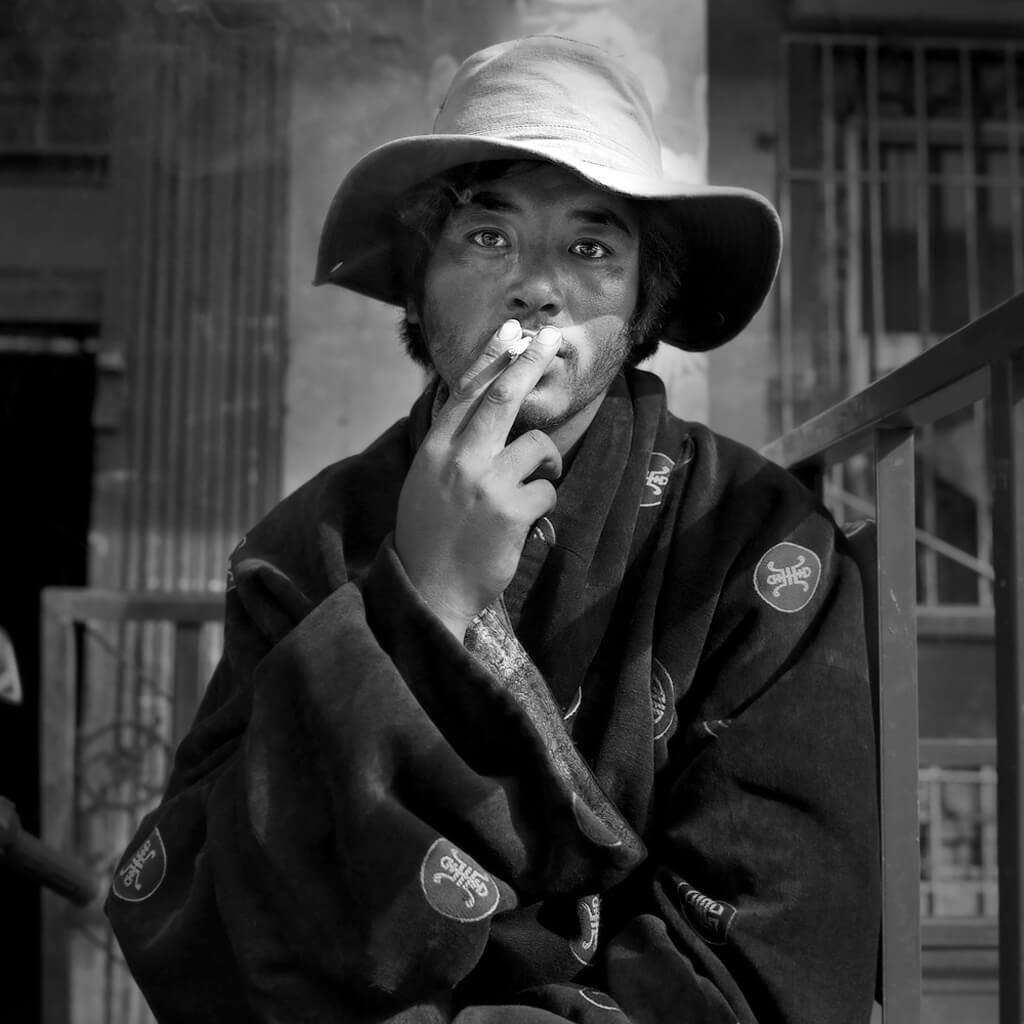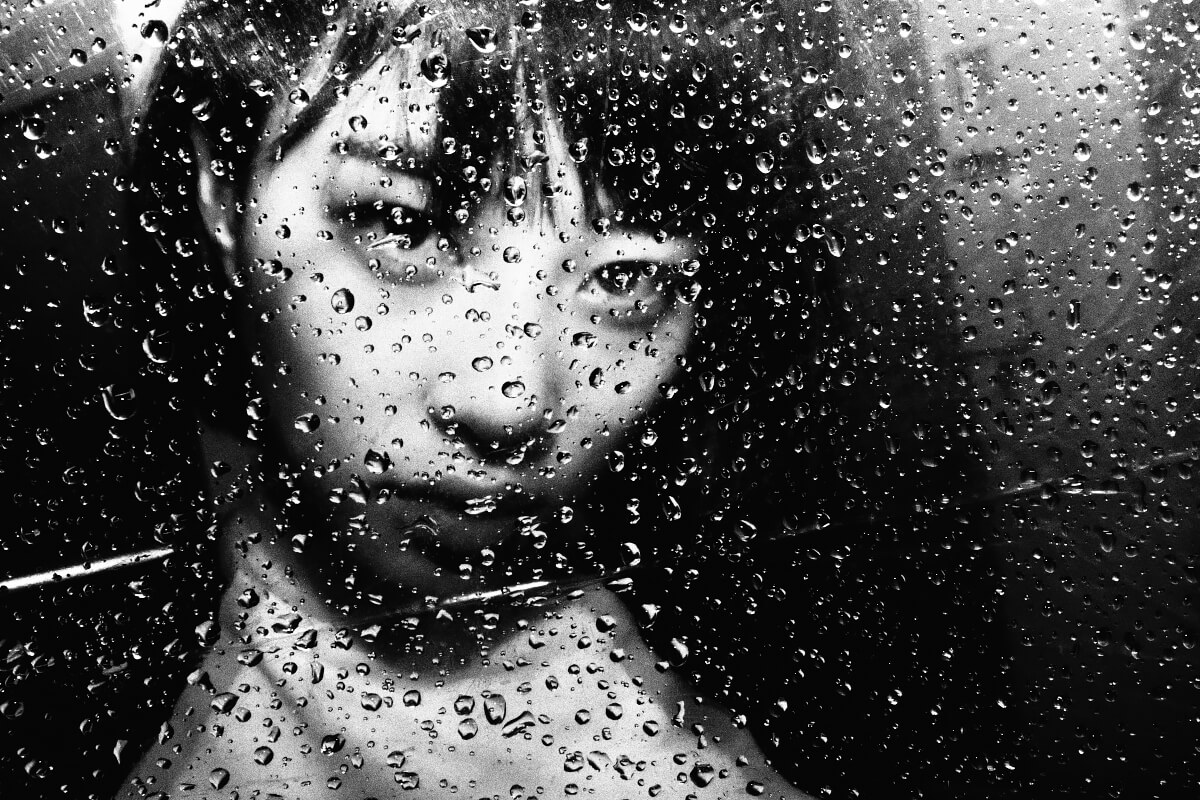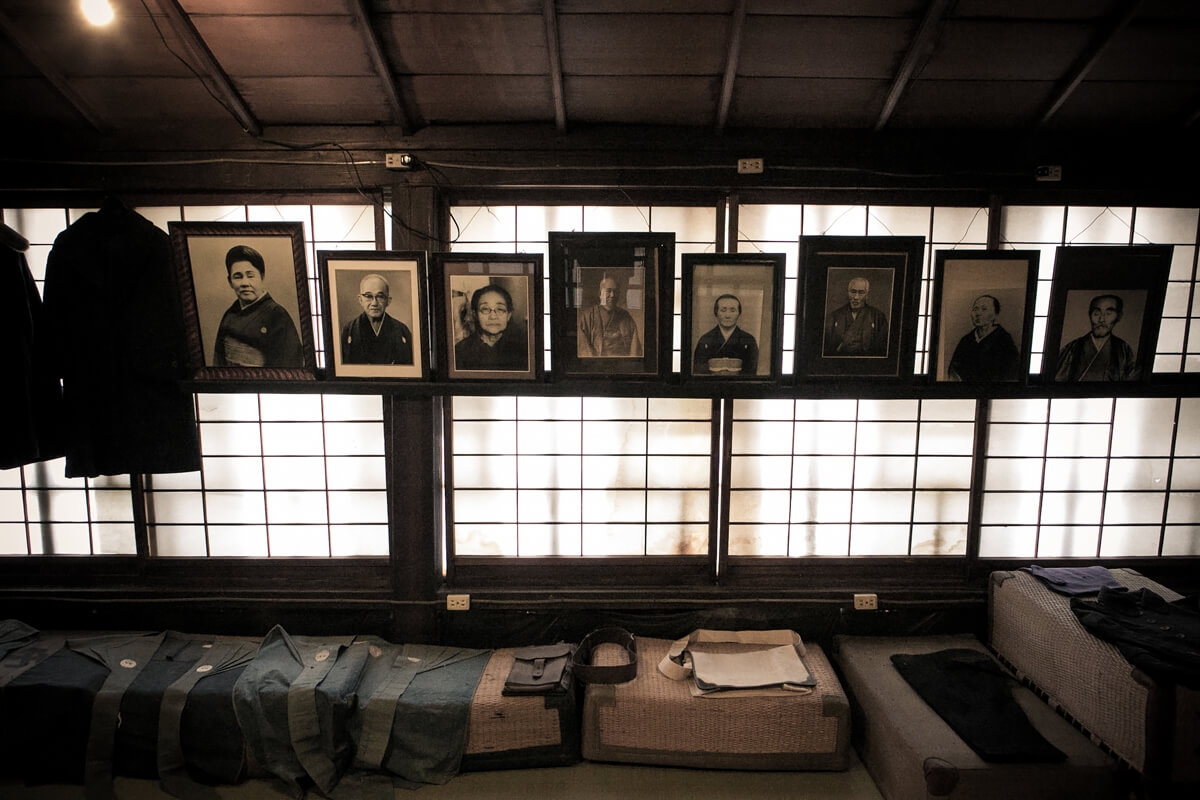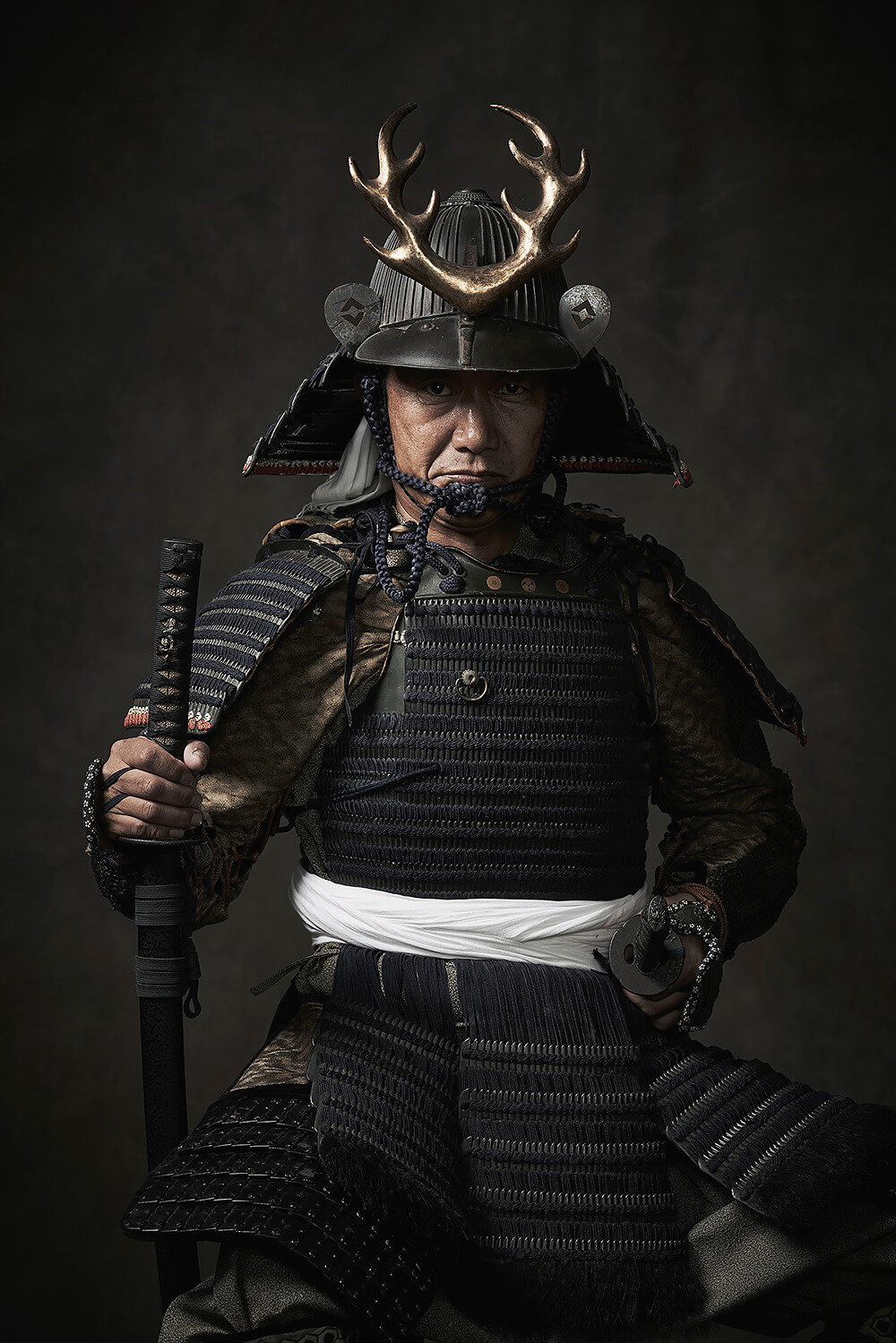The history of Japanese photography dates back to the late 19th century, when Japan first adopted Western-style photography. Prior to this, the country had a long tradition of art and visual representation, but photography as a medium was largely unknown.
In the 1870s, a number of Japanese photographers traveled to Europe and the United States to learn about the new medium, and soon after, photography began to spread rapidly in Japan. The early years of Japanese photography were marked by a fascination with the West and a desire to imitate Western styles and techniques. However, as photographers gained more experience, they began to develop their own unique style and techniques, incorporating traditional Japanese aesthetics and themes into their work.
One of the most significant developments in Japanese photography during this period was the rise of the photojournalism and documentary photography. In the aftermath of World War II, Japanese photographers began to document the country's recovery and rebuilding efforts, capturing images of the country's changing landscape and people. This period also saw the emergence of a number of prominent photographers, including Ihei Kimura, who is widely considered to be one of Japan's greatest photojournalists.
In the 1960s and 1970s, Japanese photography was heavily influenced by the counterculture and avant-garde movements of the time. Photographers such as
Eikoh Hosoe and
Shomei Tomatsu began to push the boundaries of traditional photography, experimenting with new techniques and themes that reflected the social and political upheavals of the era. This period also saw the rise of street photography, as photographers sought to capture the everyday lives of the people in Japan's cities and towns.
In the 1980s and 1990s, Japan experienced a period of rapid economic growth and modernization, and this was reflected in the country's photography. Photographers such as
Daido Moriyama and
Nobuyoshi Araki began to document the changes taking place in the country, capturing images of the new consumer culture and the rapidly changing urban landscape. This period also saw the emergence of new photographers, such as Masahisa Fukase, who challenged traditional notions of beauty and representation in their work.
Today, Japanese photography continues to evolve, with photographers exploring new themes and techniques, and incorporating new technologies into their work. The country has produced a number of highly regarded photographers, including
Rinko Kawauchi, who has gained international recognition for her dreamlike images, and Risaku Suzuki, who has gained recognition for his stunning landscapes.
Japanese photography is rich and diverse, reflecting the country's cultural, social, and political changes over the past century and a half. From its early beginnings as a Western import, Japanese photography has developed its own unique style and techniques, and has produced a number of highly regarded photographers who have left an indelible mark on the medium. Here are 10 contemporary photographers you should know.
Shinya Arimoto
Arimoto, who was born in Osaka in 1971, currently resides and works in Tokyo. Arimoto, a 1994 graduate of Visual Arts Osaka, won the 35th Taiyo Award in 1998 for his piece "Portrait of Tibet." He started the Totem Pole Photo Gallery in 2008. In 2016, Arimoto collaborated with Zen Foto Gallery to publish "Tokyo Circulation," and in 2017, she was honored with the Photographic Society of Japan's Lifetime Achievement Award and the 26th Tadahiko Hayashi Award. His other works include "TIBET" and "ariphoto selection" (Nos. 1–10, Totem Pole Photo Gallery) (Zen Foto Gallery, 2019). He actively exhibits his work both inside and outside of Japan. In 2017, he held a solo exhibition at Le Plac'Art Photo in Paris, and in 2019, he took part in the group show "Am Rand der Gesellschaft. Barlach, Springer, Arimoto" at Museum Bautzen in Germany.
Tatsuo Suzuki
Born in 1965 in Tokyo.
Living in Yokohama,nearby Tokyo today.
Started shooting in 2008.
Mainly shooting Tokyo streets,also recently shoot portraits in Tokyo Streets.
My aim to shoot the street is to show how the world is beautiful,interesting,wonderful and sometimes cruel.
By means of photography and through my own eyes with my gear.
Miho Kajioka
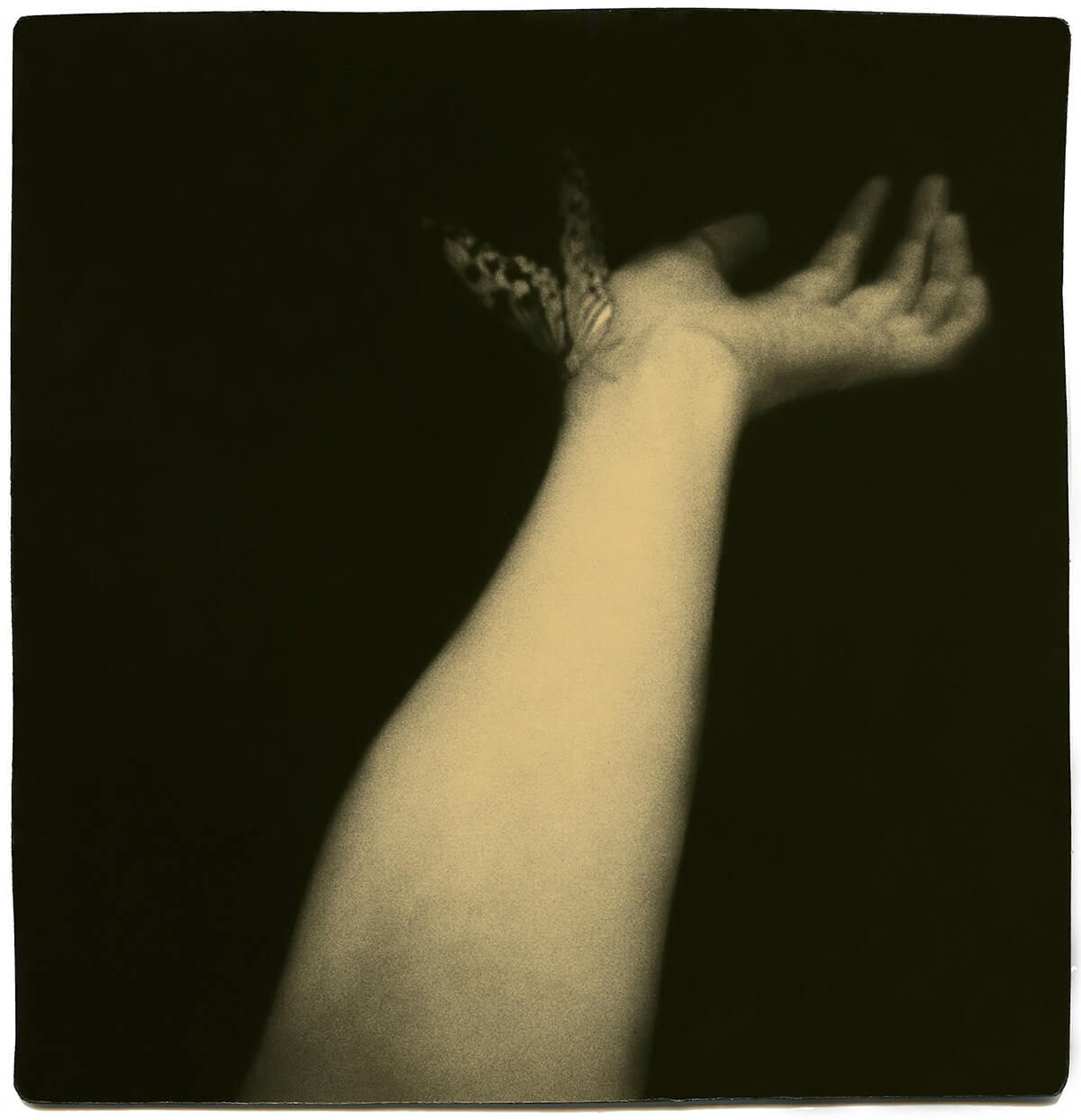


Miho Kajioka was born February 21st, 1973 in Japan and studied at Concordia University and the San Francisco Art institute in the 1990s. Kajioka's artistic practice is in principal snapshot based; she carries her camera everywhere and intuitively takes photos of whatever she finds interesting. These collected images serve as the basic material for her work in the darkroom where she creates her poetic and suggestive image-objects through elaborate, alternative printing methods. Kajioka regards herself more as a painter/drawer than as a photographer. She feels that photographic techniques help her to create works that fully express her artistic vision. Her images evoke a sense of mystery in her constant search for beauty. The focused, creative and respectful way in which she uses the medium of photography to create her works seems to fit in the tradition of Japanese art that is characterized by the specifically Japanese sense of beauty: wabi sabi. Wabi has been described as 'serene attention to simple things' and sabi as 'beauty acquired through the patina of time'. The artist regards herself as a maker of objects rather than a maker of photographs, using moments of her everday life as both inspiration and material.
Shin Noguchi
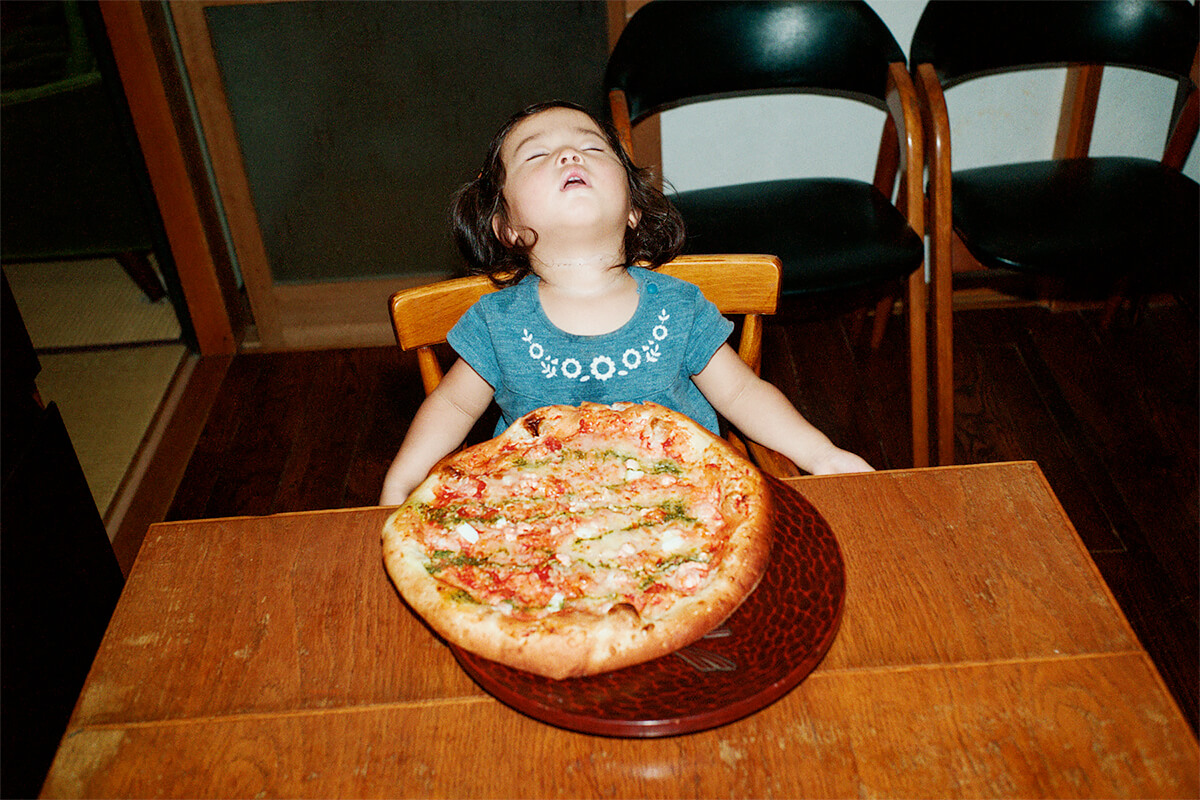


Shin Noguchi, born 1976 in Shinjuku, Tokyo, Japan, is an award winning street photographer based in Kamakura and Tokyo, Japan. He describes his street photography as an attempt to capture extraordinary moments of excitement, humanism and beauty among the flow of everyday life. With his discreet, poetic and enigmatic approach to his art, Shin is able to capture the subtleties and complexities of Japanese culture without relying on staged, no-finder or hip shot photography.
He has been invited to hold solo exhibitions in Russia, France, China (organized by Leica Camera) and other countries, and also He has been featured on The Leica Camera Blog many times, in Courrier Inte'l, Internazionale, Libération, The Guardian, The Independent, etc, and some assignment work has been also published in Die Zeit, Libération, etc.
His new book "In Color In Japan" was published in Italy, and one of his works was used as key visual for FIFDH 2022: The International Film Festival and Forum on Human Rights.
Currently, he has been selected for Leica Camera's new global campaign “M is M.” "The subjects tell me the meaning and value of life. To take a picture is to affirm the existence of peopleーthe human nature and karmaーand it's also an opportunity to affirm my own existence and accept it as it is."
Keiichi Tahara
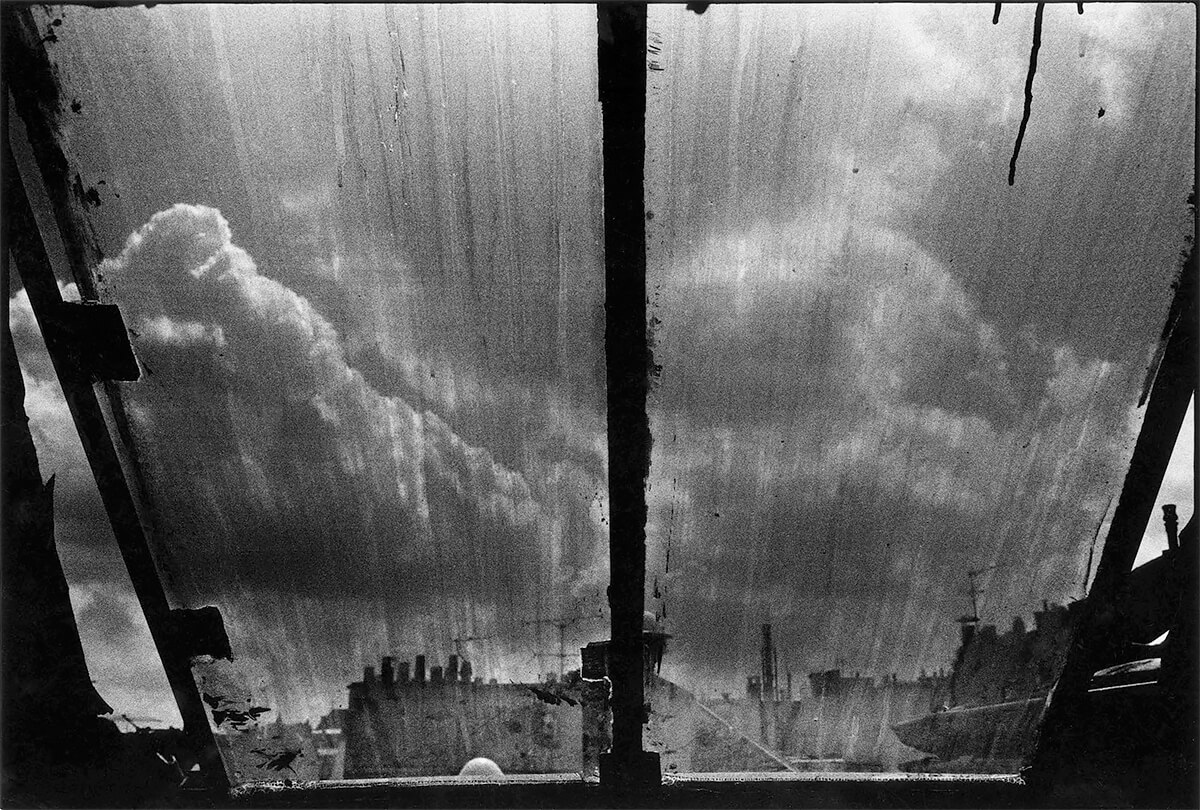


Tahara was born in Kyoto. He learned photographic techniques at an early age from his grandfather, a professional photographer.
In 1972, he travelled Europe with Red Buddha Theatre as a lighting and visual technician. While in France, he encountered a sharp, harsh and piercing light that he had never experienced in Japan. Since then, he remained in Paris for next 30 years and started his career as a photographer.
His first series of work "Ville (City)" (1973-1976) captured the unique light in Paris in black-and-white photography. His next series of work "Fenêtre (Windows)" (1973-1980) awarded the best new photographer by Arles International Photography Festival in 1977 and he moved into the limelight.The following year, he started the new series "Portrait" (1978), then "Eclat" (1979-1983) and "Polaroid" (1984) and received number of awards such as Ihei Kimura award (1985).
His morphological approach to light has extended to sculpture, installations, and other various method crossing over the genre of photography. In 1993, in moat of the Castle of Angers (1993), the first light sculpture in France, "Fighting the Dragon" (1993) was installed.
"Garden of Light" (Eniwa, Hokkaido, 1989) is a representative piece in which light sculptures are installed in a public space covered in snow for six months of the year. The light changes in response to music and presents a space of poetic dimensions. Based on the same concept, "Échos du Lumières" (2000) was installed in the Canal Saint-Martin, commissioned as a public space project by the City of Paris. The spectacle colors from the prisms illuminate the stone wall synchronizing with the sounds.
The rest of his work include a permanent outdoor installation "Niwa (Garden)" (2001) at the Photography Museum in Paris (Maison Européenne de la Photographie), "Portail de Lumière", an installation created as a part of the cultural project Lille 2004, and " Light Sculpture" exhibition at Tokyo Metropolitan Teien Art Museum in 2004.
In 2008, Tahara lead the project of building Ginza 888, with the artistic direction of the Museum of Islamic Art. A photography book was published.
He continued to produce a number of light installation projects in urban spaces. He died on 6 June 2017.
Ayumi Tanaka
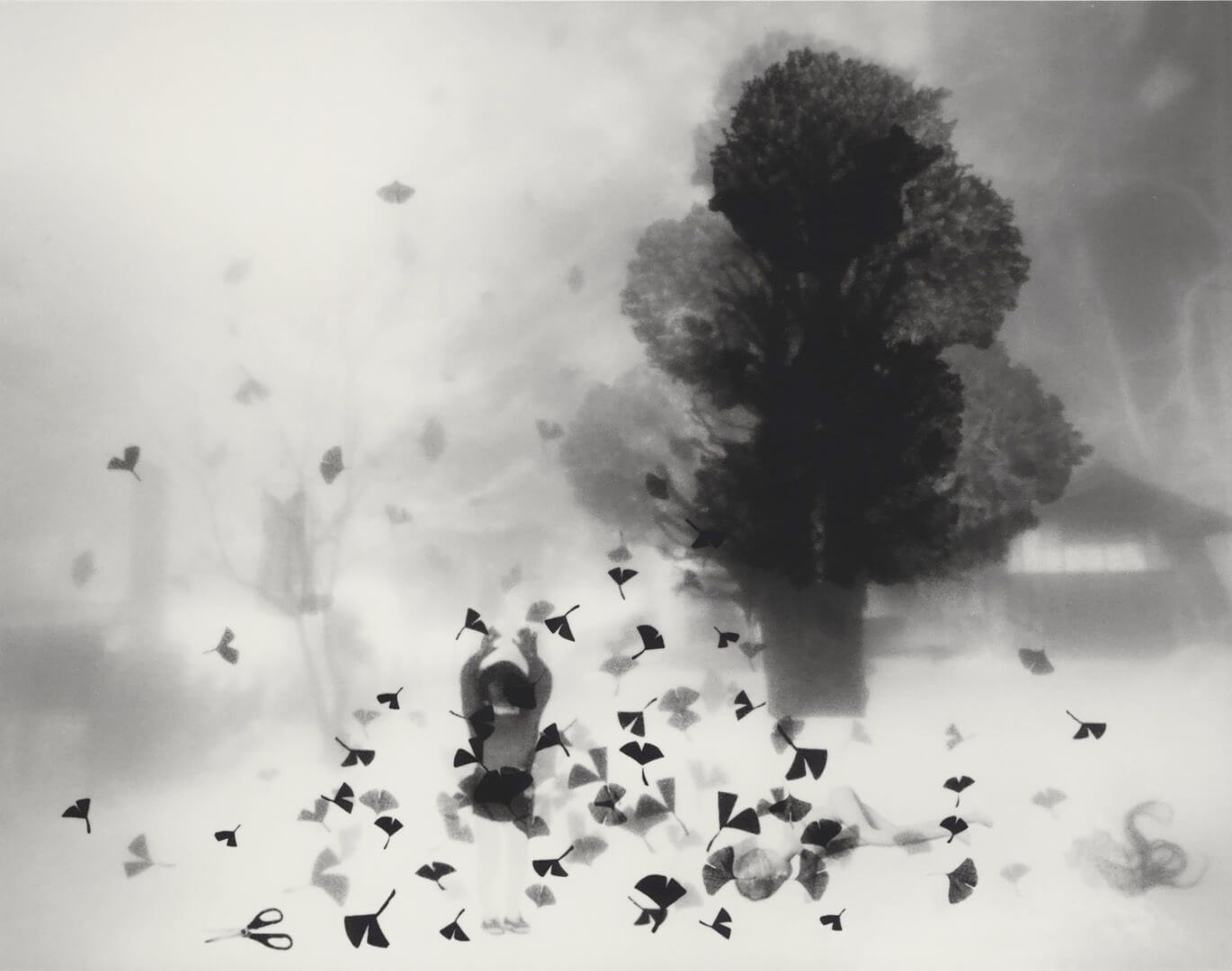


Ayumi Tanaka is a Japanese-born artist, living and working in New York City. Tanaka has been working on photography project by using found images from private snapshot and the Internet to explore theme of memories. She received a BFA from Osaka University of Arts in Japan in 2003 and studied at International Center of Photography in 2010.
Her work has been shown internationally at exhibitions including United Photo Industries Gallery in New York, Tokyo Institute of Photography in Tokyo Japan, 25 CPW Gallery in New York, Pictura Gallery, Dumbo Arts Festival 2011, LOOK3 festival of the Photographs 2012 and Athens Photo Festival 2015. Tanaka's work recently included in "Universal Nature Rediscovery of Kalevala" at Sezon Arts Gallery in Tokyo (supported by Embassy of Finland and Finish Institute of Japan and Kalevala Institute) and "Photography Now 2017" at The Center for Photography at Woodstock selected by William Ewing. Her work has been published numerous magazine including at New York Times, Blow Photo, PHat Photo, Lettre International, LensCulture, GUP Magazine, Feature Shoot and Juxtapose Magazine. Tanaka has been received International Center of Photography Director Fellowship in 2010, Grand prix at Tokyo International Photography Competition 2013 (Tokyo, New York), Photolucida Critical Mass Top 50, Feature Shoot Emerging Photography Award 2014, PDN's 30 New and Emerging Photographer to watch 2016 and New York Art Foundation Fellowship 2016.
Hiroshi Watanabe
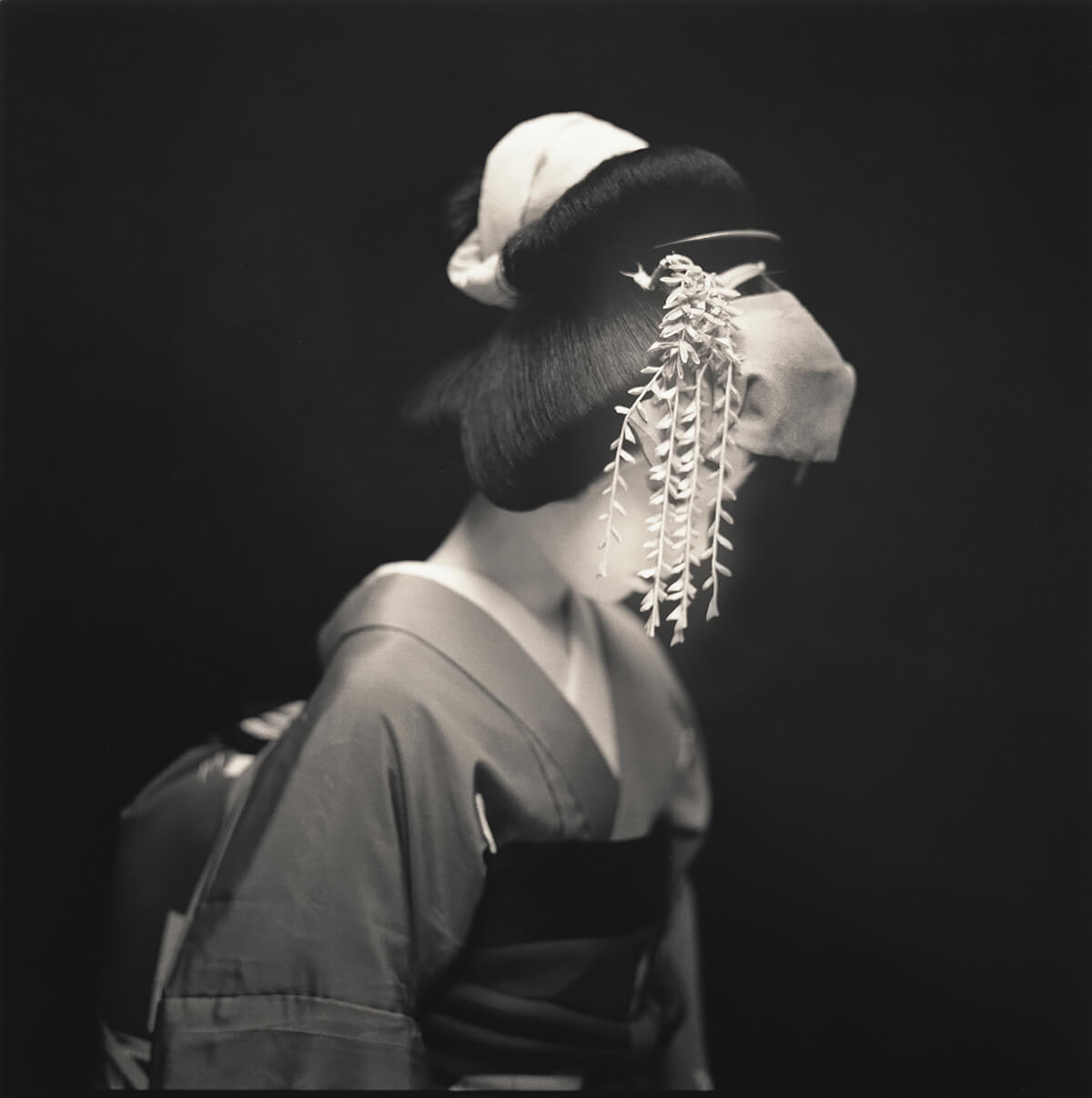


Hiroshi Watanabe is a California-based Japanese photographer. Born in Sapporo, Hokkaido, Japan in 1951, Watanabe graduated from the Department of Photography of Nihon University in 1975 and moved to Los Angeles where he worked as a production coordinator for Japanese television commercials and later co-founded a Japanese coordination services company.
He obtained an MBA from UCLA in 1993, but two years later his earlier interest in photography revived; from 2000 he has worked full-time at photography.
After five self-published books, Watanabe's first to be published conventionally was I See Angels Every Day, monochrome portraits of the patients and other scenes within San Lázaro psychiatric hospital in Quito, Ecuador. This won the 2007 Photo City Sagamihara award for Japanese professional photographers.
In 2005, a portfolio of his work was featured in Nueva Luz photographic journal, volume 10#3. In 2007 Watanabe won a "Critical Mass" award from Photolucida that allowed publication of his monograph Findings.
Watanabe's works are in the permanent collections of the Houston Museum of Fine Arts, George Eastman House and Santa Barbara Museum of Art.
Kimiko Yoshida
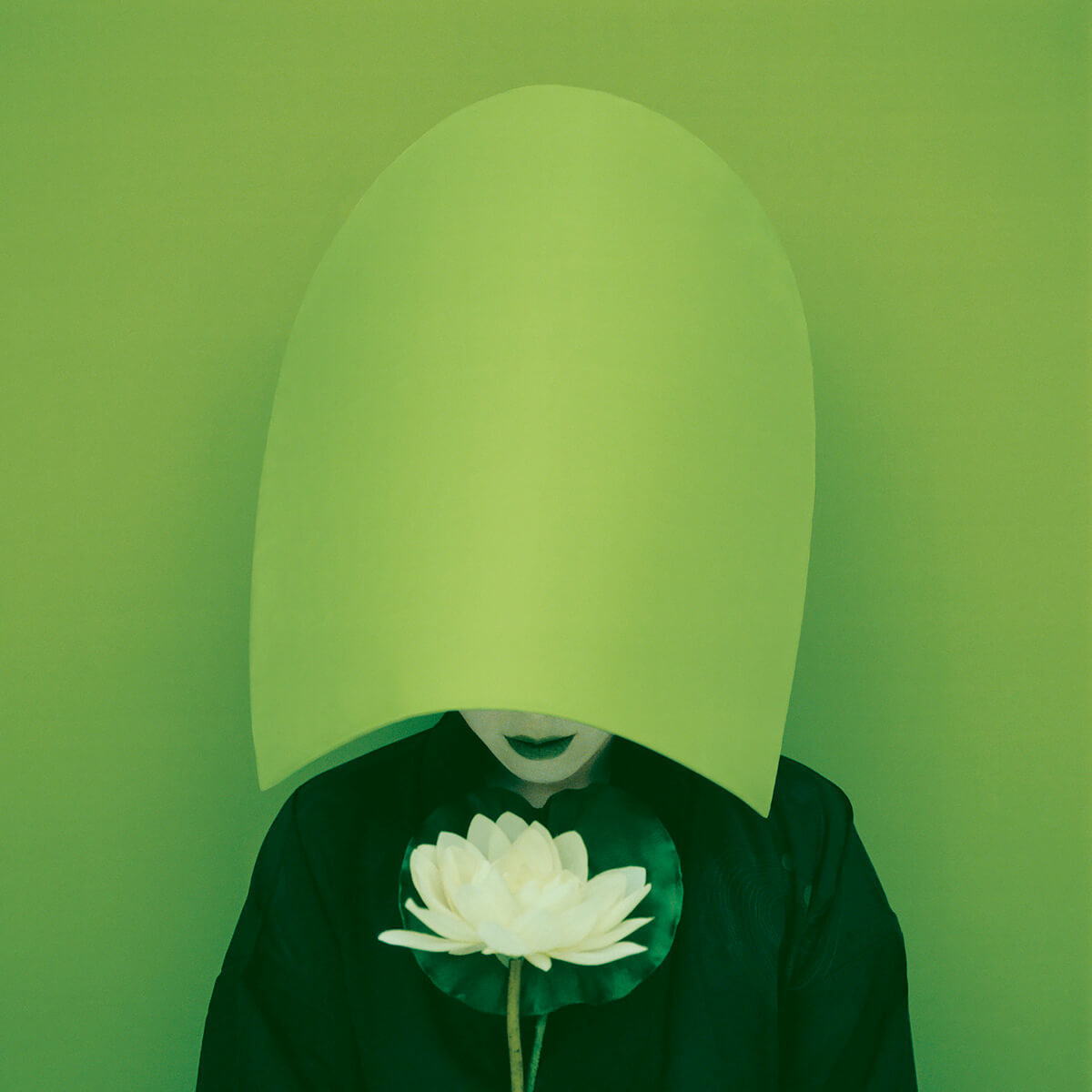


Kimiko Yoshida is a Japanese visual artist who was born in 1963 and lives in Europe since 1995.
Subtle, fictional, paradoxical, Kimiko Yoshida’s Bachelor Brides form an ensemble of quasi-monochromatic self-portraits, fragments of an intimate web, elaborating on a singular story: the feminine condition in Japan. Her images are large format, luminous squares, underlining her fantasy-bio epic. While still very young, Kimiko Yoshida was struck by the story of her own mother, who met her husband for the first time on her wedding day. Kimiko Yoshida’s own story is compelling. Born in Japan, she left to France in 1995, where she adopted a new language, a new way to live, to create. She studied photography at the Ecole Nationale at Arles, later she went to Le Fresnoy Studio at Tourcoing, France.
Kimiko Yoshida has been concentrating on this series of intangible self-portraits which can be read as a quest for the hybridization of cultures, for the transformation of the being, and perhaps even as a deletion of identities. The metamorphosis of her own identity into a multiplicity of identifications expresses the fading of uniqueness, the "deconstruction" of the self.
Yukari Chikura
Yukari Chikura born in Tokyo, Japan. After graduated from university of music. She became music composer and computer programmer. She is the winner of STEIDL BOOK AWARD and her work has been published by STEIDL. She was selected as "FOTOFEST Discoveries of the Meeting Place 2018". She won LensCulture Emerging Talent Awards 2016, Sony World Photography Awards , Photolucida Critical Mass TOP50 2016 & 2015 among others. Her work has been published by New York Times, Guardian among others. She held 12 places solo exhibition and group exhibition at museum, gallery around the world. Some projects have collected in Griffin Museum in US and Bibliotheque national de France.
Ryotaro Horiuchi
Ryotaro Horiuchi was born in Tokyo in 1969.
When he was a teenager, he started to work at the furniture studio as an assistant. During his time at the studio, he was asked to take photographs of furniture as its records. And that was the first time he felt his intention to focus on a thing in front of his eyes ''Through The Lends''. And that ''intention'' turned him into ''photo-holic'' by realizing the potential of photographs. Since then, he has been working on his works from Osaka University of Arts and while he was in Germany and till now. Now he is working with ''Descendants of Samurai'' and ''Roma Gypsy'' by taking their portraits. To do so, he keeps focusing on ''the identity'' of them and himself.
